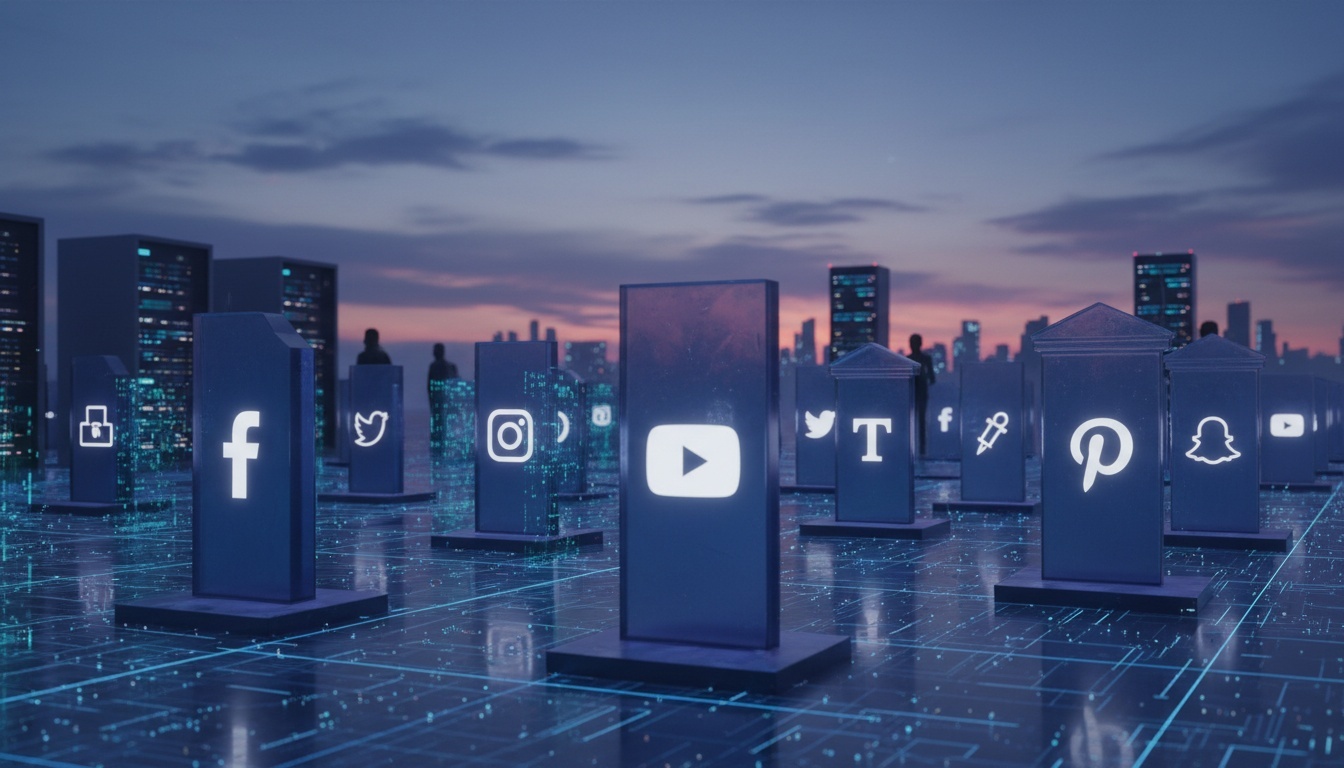Every second, our digital ecosystem processes an extraordinary volume of content. 6,000 tweets, 272 TikTok videos, and thousands of Instagram posts flood the networks. Daily, we’re talking about 350 million Facebook photos, 500 million X posts, 34 million TikTok videos, and 3.7 million YouTube uploads - requiring over 82 years to watch just one day’s content.This isn’t growth. It’s digital hyperinflation.
Self-Combusting Economics
Social platforms face an impossible equation. Processing billions of daily posts requires massive infrastructure investment, yet engagement rates tell a brutal truth - Facebook’s average engagement has collapsed to 0.07%, X/Twitter manages just 0.15%, and even Instagram’s median engagement plummeted from 2.94% to 0.61% in just one year.The platforms are spending more to deliver less value - a textbook definition of a broken business model.Consider the infrastructure reality. Every photo, video, and text post must be stored, processed through recommendation algorithms, moderated for content violations, and distributed globally. As volumes increase exponentially but engagement drops precipitously, the cost-per-meaningful-interaction spirals upward. Platform providers are essentially subsidising an ocean of ignored content.
The Slop Tsunami
Let’s address the elephant in the feed - quality. When brands pump out 9.5 posts daily across platforms, when 207 million content creators compete for attention, and when AI-generated content floods every channel, we’re not creating value - we’re manufacturing digital landfill.The evidence is damning.
76% of users unfollow brands for clickbait
68% abandon accounts posting repetitive content
52% report exhaustion from promotional posts
75% of marketers admit they’re seeing diminishing returns
We’ve created a vicious cycle. More content drives down engagement, which prompts even more desperate content creation, further destroying effectiveness. It’s a digital arms race where everyone loses.
Power is Shifting
Here’s what should terrify platform executives. As effectiveness crumbles, so does pricing power. Marketing budgets for social media have crashed from 23% during the pandemic to just 11% - a seven-year low. When organic reach effectively dies (Facebook pages now reach only 2.6% of followers organically), platforms must rely entirely on paid promotion.But what happens when paid promotion stops working? When 75% of performance marketers report diminishing returns despite increased spending? The platforms’ ability to command premium prices evaporates alongside their effectiveness.LinkedIn’s 99% increase in engagement stands as the exception that proves the rule - it works precisely because it has less content saturation. The moment LinkedIn follows the volume path of its peers, it too will combust.
No Longer Content
What if we don’t need content marketing at all?As Large Language Models become our primary interface for product discovery and purchase decisions, the entire content-for-commerce model becomes obsolete. Why scroll through 350 million Facebook photos when an AI can instantly surface exactly what you need? Why wade through 500 million daily tweets when an LLM can synthesise relevant insights without the noise?Consider this future.
Products and services integrate directly into LLM training data
Purchase decisions emerge from conversational AI interactions
Demand generation happens through intelligent recommendation, not interruption marketing
Trust comes from AI verification, not influencer endorsement
Brands spending millions on content creation might find their products sell better through simple, accurate data feeds to AI systems. The entire creator economy - valued at $250 billion and projected to reach $528 billion - could be disrupted by intelligent agents that bypass content entirely.
The Frequency Paradox
Posting 11+ times weekly on TikTok increases average views by just 34%, but median views remain flat at 500 regardless of frequency. This isn’t just a statistical curiosity - it’s proof that the entire volume-based model is fundamentally broken.We’re witnessing the social media equivalent of pushing on a string. More input generates marginally better averages only by occasionally hitting viral lottery tickets, not by improving consistent performance. It’s a business model built on gambling, not value creation.
The Edge of Attention
Users spend an average of 2 hours and 23 minutes daily on social media, spread across 6.8 different platforms. This is a finite resource that cannot expand indefinitely. With billions of posts competing for these limited minutes, basic mathematics dictates that individual content effectiveness must decline.We’ve reached peak attention. Every new post doesn’t expand the pie - it just makes each slice thinner.
Trouble Ahead
If current trends continue, we’re heading toward a cascade failure.
Platform Economics Collapse Infrastructure costs rise while per-post value approaches zero
Advertiser Exodus When ROI becomes unmeasurable, budgets shift to channels with demonstrable returns
Creator Economy Implosion 71% of creators already earn less than $30,000 annually; as effectiveness drops, this becomes unsustainable
User Abandonment Faced with endless, ineffective content, users migrate to closed communities or AI-mediated experiences
A Post-Content Future
The solution isn’t better content or smarter algorithms. It’s recognising that the content-as-marketing model has reached its natural end.The future looks very different.
Direct data integration with AI systems
Conversational commerce through LLMs
Precision-targeted, invitation-only communities
Value exchange based on utility, not attention-grabbing
We’re watching the real-time collapse of a business model. Platforms pumping billions into processing exponentially growing content volumes while engagement rates crater aren’t experiencing a temporary downturn - they’re documenting their own obsolescence.
What Next?
Social media platforms are caught in an impossible position. They must process ever-increasing content volumes (driving up costs) while delivering ever-decreasing value (destroying pricing power). When combined with AI systems that can bypass content entirely for commerce and information discovery, we’re not looking at evolution - we’re witnessing revolution.The question isn’t whether the content marketing model will collapse, but how quickly the alternatives will replace it. Smart organisations are already preparing for a post-content world where value isn’t created by adding to the noise, but by delivering genuine utility through whatever channel - human or AI - best serves the outcome.The age of infinite content is ending. What comes next will be defined not by who shouts loudest, but by who delivers value most efficiently. And that might not involve traditional content at all.
